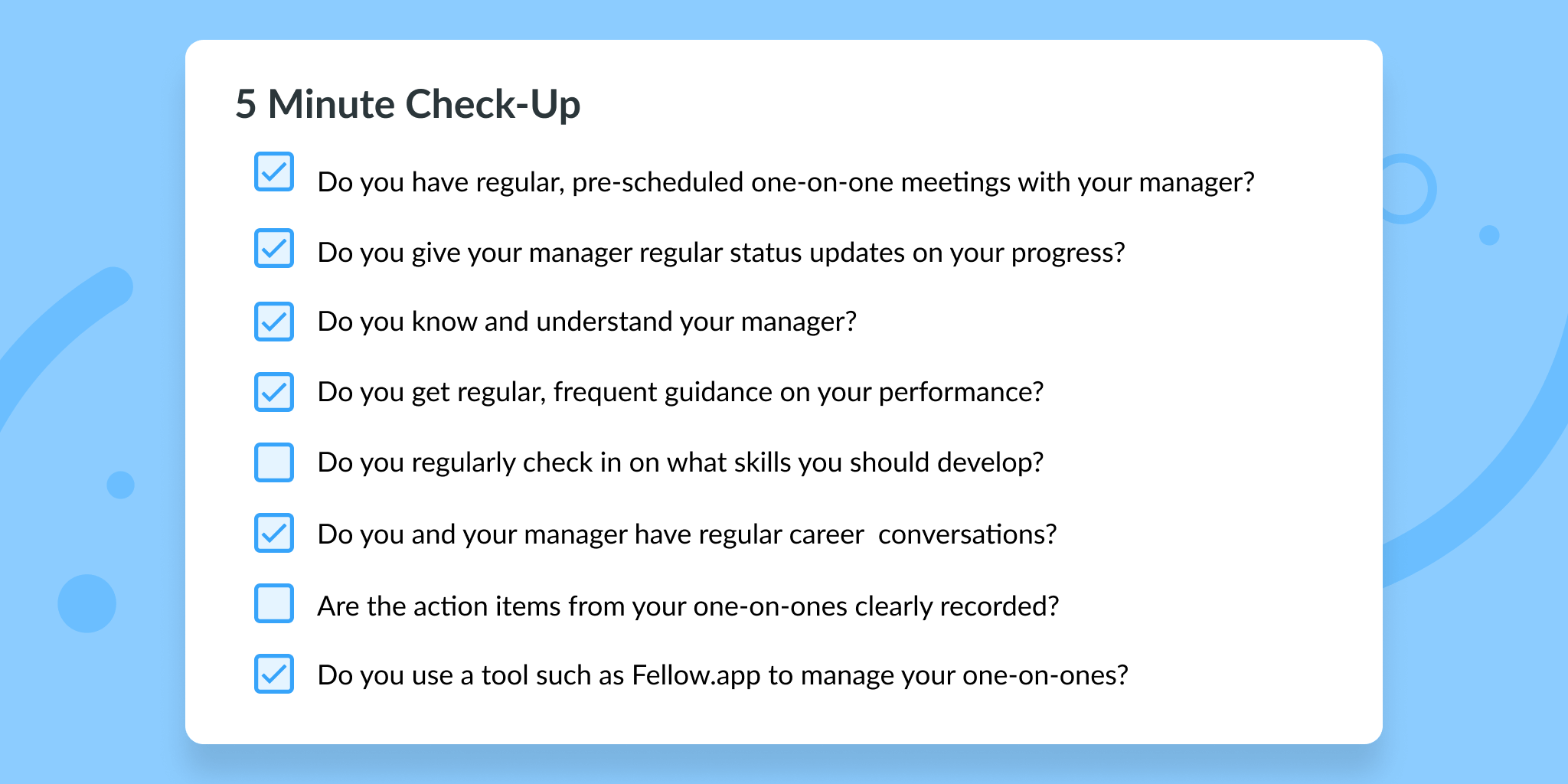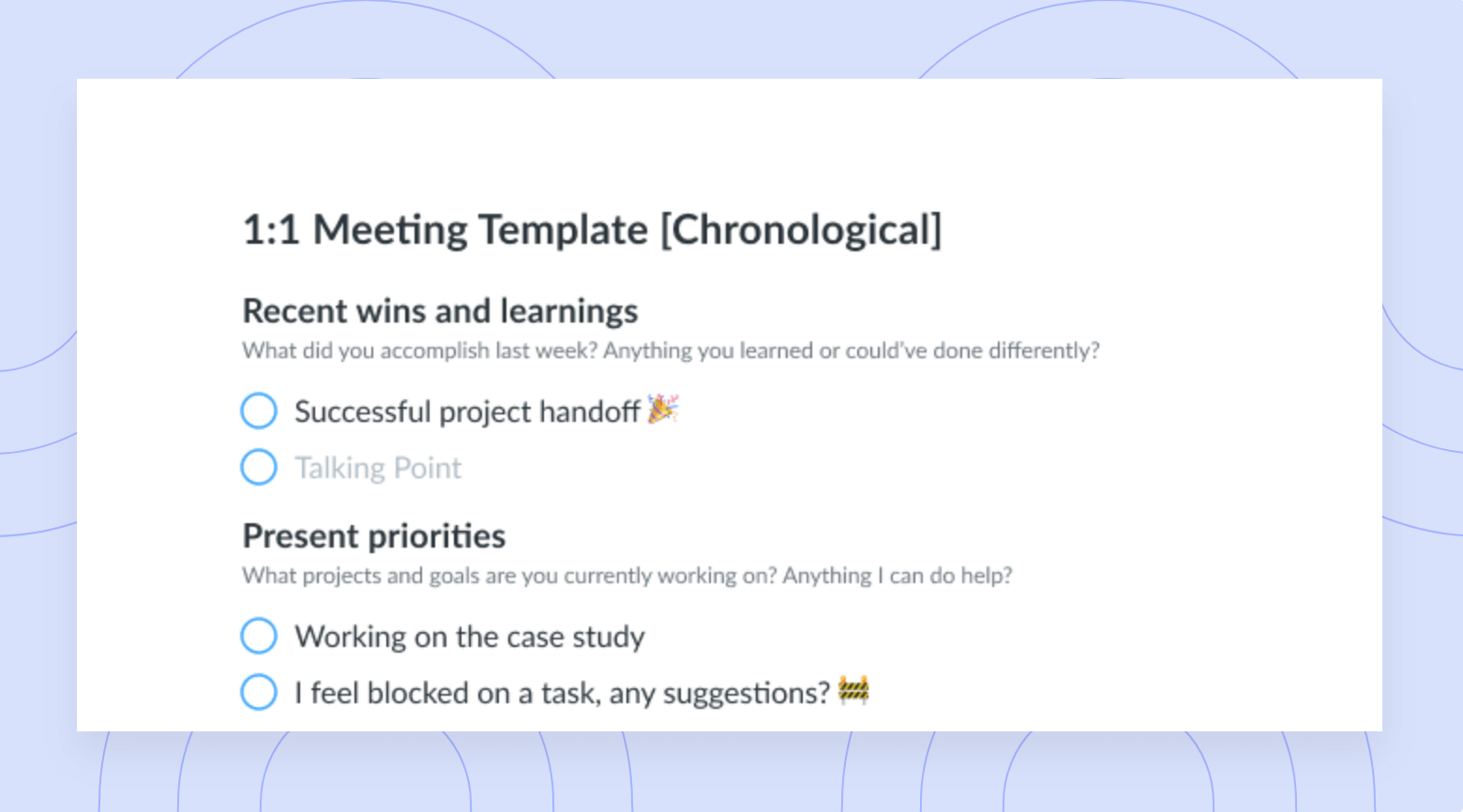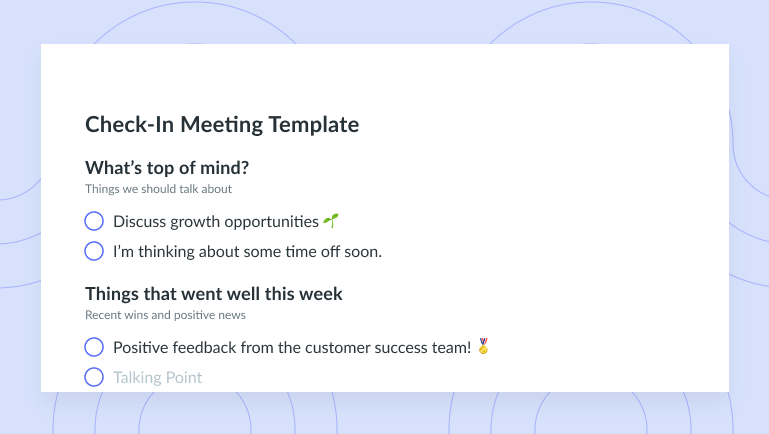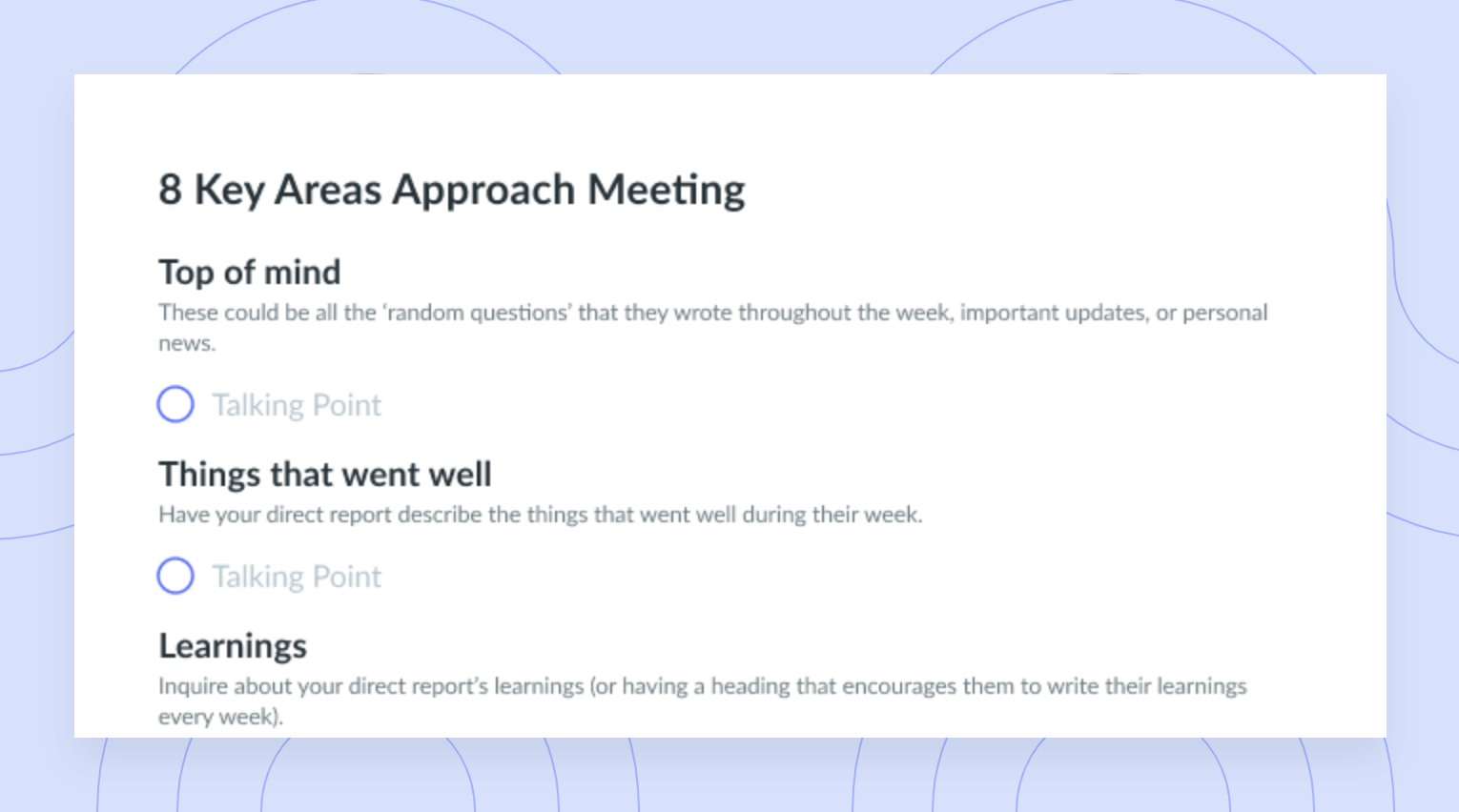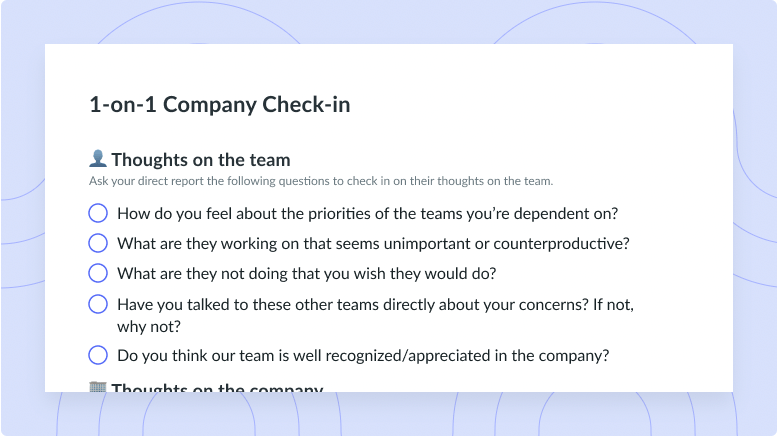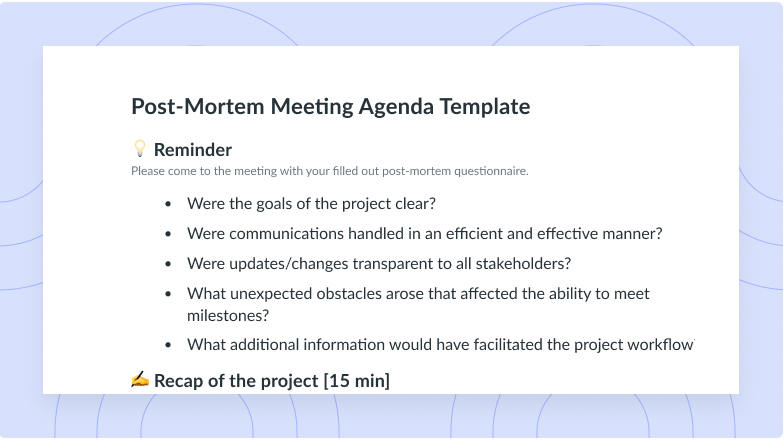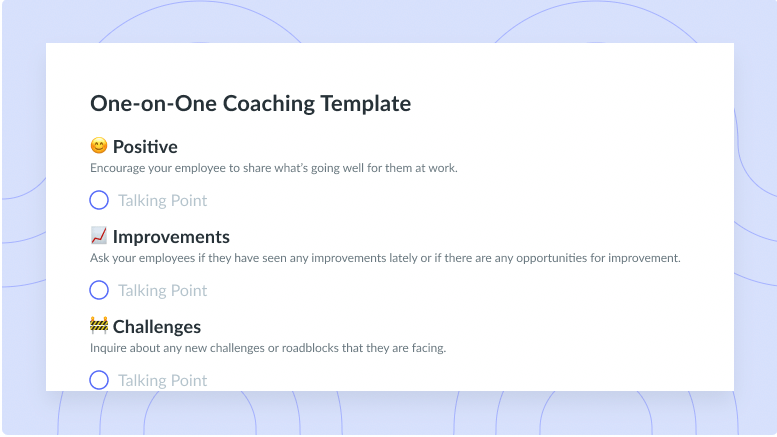One-on-One Meeting FAQs: What Are the World’s Top Leaders Doing and Why?
What is a one-on-one meeting? How often should you meet with your direct reports? We answer all your questions in this post.
- What is a one-on-one meeting?
- One-on-one meeting frequency
- What’s better?
- Scheduling your one-on-one meetings
- Where should your one-on-one meetings take place?
- Are one-on-one meetings work or personal?
- Is there a standard one-on-one meeting agenda?
1 What is a one-on-one meeting?
A one-on-one meeting is a dedicated space in your calendar for you to connect with each person reporting to you and stay in the loop about priorities, team issues, and potential roadblocks.
Most importantly, it’s an anticipated moment where employees can ask in-depth questions, receive coaching on their strengths and weaknesses, and provide feedback — three things they wouldn’t be able to do in a public space or at a team meeting.
The Definitive Guide to One-on-Ones

90+ Pages of the best advice from managers at the world’s most respected companies. With a foreword by Lara Hogan, author of Resilient Management, this is the one guide all managers should read.
2 One-on-one meeting frequency: How often should you meet and for how long?
Opinions vary wildly on this. However, we can share with you what works best for most people, based on extensive testing: Aim for 30 minutes every week. Here are some of the reasons why:
- 30 minutes every week is better than 60 minutes every two weeks because this keeps the meeting content fresh.
- Weekly one-on-ones help to maintain relevance and pace of delivery.
- More frequent, regular meetings are better at building relationships than infrequent, irregular meetings.
- Missing an individual meeting is less of an impact because you only lose a week, but miss a fortnightly meeting and suddenly it’s a whole month between meetings.
- Having a short time slot forces you to be time-efficient and means less of a negative impact on the rest of your calendar. Note: It is a challenge to get down to 30 minutes – this will come over time as you get better at it.
3 What’s better: A regular one-on-one meeting or ad hoc as needed?
Without a doubt: Schedule a regular, recurring one-on-one meeting because:
- It’s lower overhead than trying to book every meeting on an ad-hoc basis.
- A regular one-on-one meeting timeslot builds a weekly cadence and means you know when it is happening, without having to check your calendar.
- A pre-booked, repeating meeting means you’re less likely to fall out of maintaining a one-on-one meeting practice.
- Regular communications allow you to proactively respond to issues before they snowball and get out of hand.
- A regular, pre-scheduled meeting means you can save your non-urgent communications for this timeslot.
And possibly most importantly: we know that the realities of life mean that our good intentions, seldom materialize. If we intend on having a meeting, it’s easy for this intention to get put off by more urgent, but less important priorities.
The way to make something happen is to set aside the time for it.
Pro Tip
Save time and interruptions by grouping your non-urgent talking points in a meeting agenda tool like Fellow.

4 Scheduling your one-on-one meetings: What day of the week is best to meet?
Tuesday is a great option.
Scheduling your one-on-one meeting on Tuesdays gives you time to prepare for the meeting, but is early enough in the week for it to still be relevant for the week ahead. Plus, if something comes up that delays the one-on-one meeting, there is still time to re-schedule the meeting within the same workweek.
5 Where should your one-on-one meetings take place?
Somewhere convenient and relatively private. Don’t bother going off-site, or booking a special meeting room because this adds to the friction. Reducing friction reduces meeting overhead.
Meeting at your office or your managers’ office (for example) will give you sufficient privacy for 99% of the conversations you will need to have. On the occasions that you need more privacy (or if your company has an open office plan) – by all means, book a private room.
6 Are one-on-one meetings work or personal?
One-on-ones are a work meeting, so naturally, the primary focus is to cover work-related agenda items (such as obstacles, priorities, and feedback). But there is always a personal side to business because we are humans. And these meetings are also about getting to know your teammates and about getting them to know you as a person. Building a better relationship with your team will improve both your work happiness and effectiveness.
And, of course, it’s difficult to totally split your work life and who you are as a person. Your personal preferences will determine what work you are better at and how you want to develop your career. Your personal circumstances will affect your productivity and availability.
Pro Tip
If you have a personal issue that is going to impact your ability to work, I suggest that you keep your manager informed. You don’t have to share private details, just as much information as your manager needs to know.
7 Is there a standard one-on-one meeting agenda?
No, but there should be! As discussed in this one-on-one meeting agenda template, I recommend that you cover the following topics as a best practice agenda:
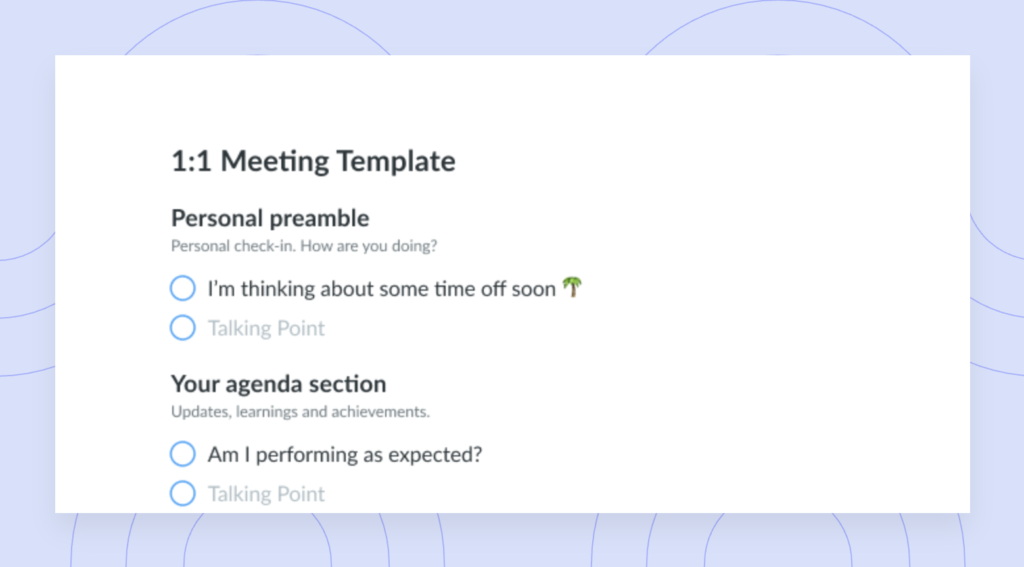
- Personal preamble: Understand who your teammate is outside of work.
- Direct report’s section: Updates, learnings, and achievements.
- Manager’s section: Cascading information, roadblocks, and feedback.
- Priorities for the week ahead.
- Development & Growth: Skills development, stretch assignments, and goals.
